UAV V-Bat participates in the US Army FTUAS Inc 2 program
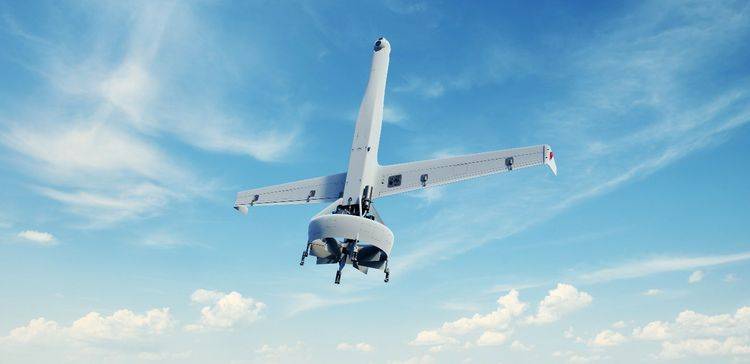
Project appearance of the V-Bat UAV for the FTUAS Inc 2 competition
The US Army is conducting a promising FTUAS program, the purpose of which is to create new tactical-level reconnaissance UAVs. Recently, the program moved to a new stage, and its participants received contracts for the creation and testing of experimental equipment. One of the contenders for winning the program is the upgraded V-Bat UAV from Northrop Grumman, Martin UAV and Shield AI.
FTUAS Increment 2
The Future Tactical Unmanned Aircraft System program ("Promising Tactical UAV") was launched in the recent past at the initiative of the US Army. Its goal is to create a medium-sized drone with intelligence functions to replace obsolete samples. In particular, in the future, FTUAS will take the place of the current RQ-7 Shadow.
In the recent past, the first phase of the program was held, during which several companies proposed a number of preliminary projects. The customer compared them and made the first conclusions. After that, they launched the second stage of the program under the designation Increment 2, and the participants began to finalize their projects.
On February 27, 2023, the US Army issued contracts to five participants in the program to complete projects and manufacture prototype UAVs. Contract prices vary. Depending on various factors, the competing companies received from 1 to 25 million dollars.
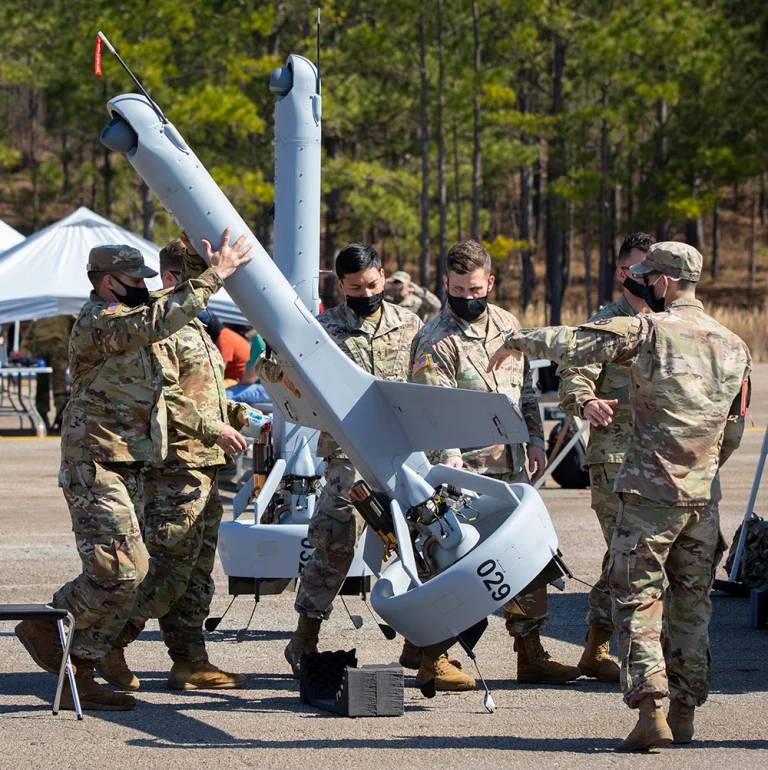
Working with UAV V-Bat
The FTUAS Inc 2 program provides for the fastest possible prototyping and comparative testing. Based on the results of the first stage of the competition, the most successful developments will be determined, which will then be improved and compared again. The last stages of the program will be carried out with the participation of only one UAV, which has shown superiority over competitors and has undergone all the necessary improvements.
The work will only take a couple of years. In FY2025 the winner of the program will have to submit full-fledged unmanned aviation complexes and prepare the production line. After that, an order will appear for mass production of equipment for delivery to the troops.
Program participant
One of the contenders for the victory is a consortium of Northrop Grumman, Martin UAV and Shield AI. Together, they developed a new modification of the V-Bat drone, presented and put to the test a few years ago.
The V-Bat product was developed by Martin UAV in the first half of the XNUMXs, and testing began in the middle of the decade. The UAV was able to interest potential customers in the face of the US Navy and Marine Corps. As a result, in the second half of the tenths, various tests of the apparatus were carried out. He worked from land sites and from the deck of ships and carried out various missions.
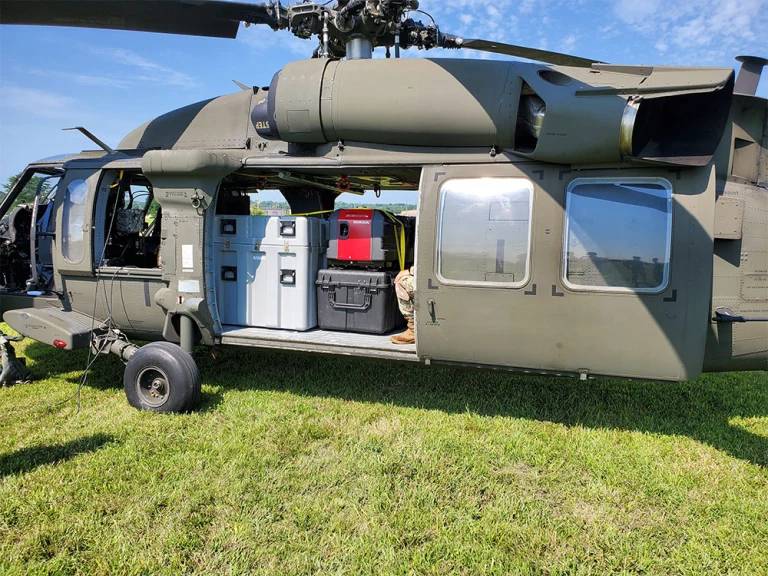
Containers with V-Bat complex in the cockpit
As testing continued, the design of the V-Bat product improved. Separate devices were also replaced and the software was updated. In addition, Northrop Grumman and Shield AI have joined the project, giving it new perspectives. So, it is thanks to Northrop-Grumman that the V-Bat product is now participating in the FTUAS Inc 2 competition and can count on winning.
Vertical take-off and landing
The V-Bat is a VTOL (VTOL) unmanned aerial vehicle capable of both hovering and level flight. It was built according to the scheme of the so-called. tailsitter - on the takeoff site the device is in a vertical position, and after lifting it is able to change position and fly "like an airplane".
In terms of design, the V-Bat is similar to an airplane. It has an elongated fuselage that accommodates equipment and propulsion, as well as a high aspect ratio straight wing with ailerons. An annular channel with a pusher propeller inside is placed in the tail of the fuselage. There are air rudders on the trailing edge of the channel. The UAV airframe is made collapsible, which facilitates transportation.
The length of the V-Bat is 9 feet (2,73 m), the wingspan is 9,7 feet (2,95 m). The propeller bore is 28 inches (711 mm) in diameter. The product's own weight does not exceed 90 pounds (41 kg). Payload is 11 kg with a choice of available options and quick replacement.
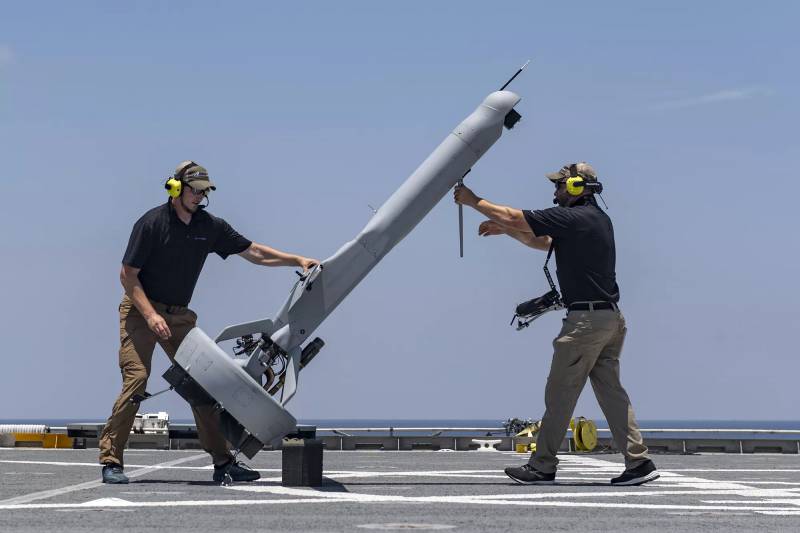
US Navy V-Bat Tests
In the tail of the fuselage is a piston engine with a pusher propeller. During vertical takeoff and landing, the propeller group works as a carrier system. After the transition to level flight, it provides translational motion. Engine power provides enough thrust for vertical flight. The maximum speed in level flight reaches 165 km / h. Cruising - 87 km / h; the UAV is capable of flying on it up to 10-11 hours.
V-Bat in the version from Northrop Grumman and Shield AI received an updated on-board avionics system. Modern navigation devices are used. There is a two-way communication system that provides remote control and data and video signal transmission. An autopilot is also provided, capable of performing horizontal and vertical flight, as well as switching from one mode to another. Due to the tailsitter scheme, special requirements were placed on the autopilot and its algorithms.
In the nose of the fuselage there is a place for installing a payload in the form of an optoelectronic station with the required characteristics. With the help of any compatible ECO, the drone can conduct reconnaissance, detect ground targets and determine their coordinates.
For ease of transportation, the UAV is disassembled into several components. The wing is removed and divided into two parts; the fuselage is also disassembled. All elements of the drone and related equipment are placed in a container of the minimum required size. Each vehicle can carry one such container. On the HMMWV in the cargo version, two complexes are placed.
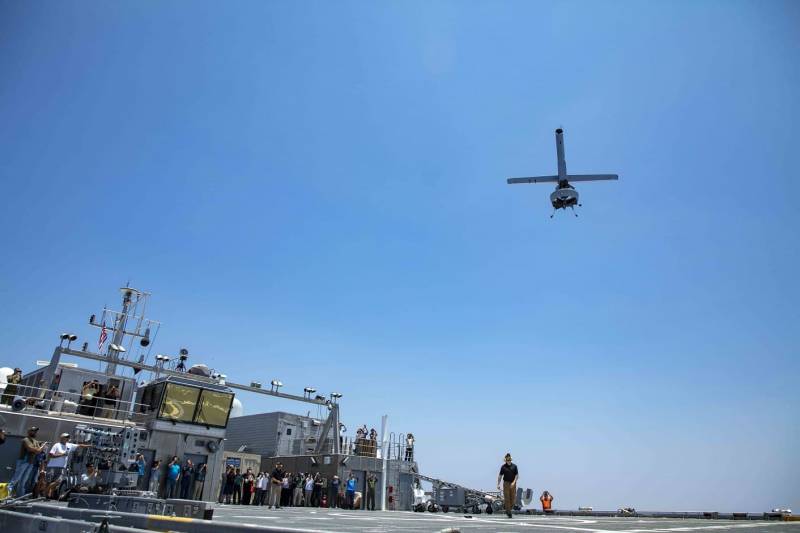
The deployment of the UAV on the position is carried out by the crew of two people and requires no more than 15-20 minutes. For takeoff and landing, an area no larger than 12 x 12 feet (3,6 x 3,6 m) is required. In practice, the possibility of using the V-Bat both on land and on ships has been shown. Automation is capable of taking off and landing on a moving platform, incl. in rolling conditions.
additional verification
UAV V-Bat from Martin UAV appeared a long time ago and managed to pass a series of tests. In all expected operating conditions, the device showed the required takeoff and landing and flight characteristics, and also demonstrated the possibility of reconnaissance, adjustment and target designation. At the same time, the design of the drone and the control algorithms turned out to be quite complex.
Part of the past tests were carried out in the interests of the Navy and the USMC, and they became interested in the unmanned complex. Now the V-Bat product is participating in a new promising program, this time from the US Army. The original project was finalized taking into account the requirements of this customer, and in the near future another prototype will be built on it. Flights and inspections under the FTUAS Inc 2 army program should begin this year. Probably, the first conclusions will also be made before the end of the year.
The prospects for the V-Bat project in the context of the new US Army program are still unknown. By itself, this UAV looks successful and promising, but as part of the current competition, it will be compared with several other developments. It is possible that one of them will be considered more interesting for use in the ground forces, and Northrop Grumman, Martin UAV and Shield AI will not be the winners.
In general, the authors of the V-Bat project in the version for the FTUAS Inc 2 program can count on winning and getting lucrative contracts. However, for this they will have to continue developing a new UAV and do everything possible to convince the customer of its superiority.
Information